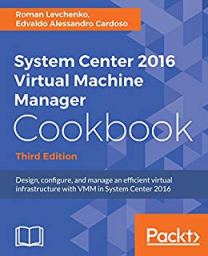Archive
Sharing roles with Hyper-V on the same physical host
Please DON’T !
I see so many questions around that, which means that some folks still do not understand:
Simple as that DO NOT ADD OTHER ROLES IF ADDING HYPER-V ROLE.
When the Hyper-V role is installed, the host OS becomes the Parent Partition, and the Hypervisor partition is placed between the parent partition and the hardware.
When you have the Hyper-V role installed keep it as a dedicated Hyper-V host server. Other roles and features not directly related to supporting the Hyper-V role are not supported on the parent partition and that includes DOMAIN CONTROLLER.
The only Roles and Features supported to be installed on the physical host (hyper-V) are:
- File and Storage Services (installed and part of Hyper-V support)
- Failover Cluster Manager (if host will become part of a cluster)
- Multipath I/O (if host will be connecting to an iSCSI SAN, Spaces and/or Fibre Channel)
- Remote Desktop Services (if VDI will be used on the host)

Plus:
Also, when possible, choose the Server Core installation to reduce OS overhead, reduce potential attack surface, and to minimize reboots (due to fewer software updates).
Ensure hosts are up-to-date with recommended Microsoft updates, to ensure critical patches and updates – addressing security concerns or fixes to the core OS – are applied.
Host should be domain joined, unless security standards dictate otherwise. Doing so makes it possible to centralize the management of policies for identity, security, and auditing. Additionally, hosts must be domain joined before you can create a Hyper-V High-Availability Cluster.
Anti-virus software should exclude Hyper-V specific files using the Hyper-V: Antivirus Exclusions for Hyper-V Hosts article
Windows 2012 Hyper-V pass-through disks and Live Migration support
Since Windows Server 2008 R2 and now with Windows Server 2012, the performance improvements of Fixed and Dynamic disks are impressive. One of the main reasons that some IT folks were still deploying pass-through was due to the disk size limitation to 2TB. But in Windows 2012, with the VHDX format the size limit increased to a huge 64TB and you have features that prevent corruption; plus, by using pass-through disks you lose benefits such as portability, snap-shotting and thin provisioning.
In saying that, as pointed by Jeff Woolsey, Microsoft Windows Server & Cloud:
Pass-through disks are supported during Hyper-V Live Migration ONLY if the Virtual Machine being migrated and the pass-through disk are manage by the same Hyper-V cluster :
Pass through disks are still supported with Windows Server 2012 Hyper-V Live Migration (just like they were with Windows Server 2008 R2 Hyper-V) as long as the migration of a clustered VM and the pass through disk is managed by the cluster.
Pass through disks are not supported for migrations outside of a cluster, such as:
- Shared Nothing Live Migration or
- Using standalone hosts with file on a SMB share (without clustering enabled)
…pass through disks aren’t supported because the pass through disk doesn’t have a way to move between hosts.
Again my recommendation : STAY AWAY FROM PASS-THOUGH DISKS.
You will find similar recommendation from the fellow MVP’s Aidan Finn, Didier Van Hoye or Hans Vredevoort
Microsoft released updates for System Center 2012 SP1
Microsoft released an update rollup for some of the System Center 2012 SP1 family products.
To automatically install the updates,
check the Microsoft Update or
To manually download the following update packages :
App Controller (KB2815569): http://catalog.update.microsoft.com/v7/site/Search.aspx?q=2815569
Operations Manager (KB2826664): http://catalog.update.microsoft.com/v7/site/Search.aspx?q=2826664
Operations Manager – UNIX and Linux Monitoring (Management Pack Update) (KB2828653): http://catalog.update.microsoft.com/v7/site/Search.aspx?q=2828653
Service Manager (KB2828618): http://catalog.update.microsoft.com/v7/site/Search.aspx?q=2828618
Orchestrator (KB2828616): http://catalog.update.microsoft.com/v7/site/Search.aspx?q=2828616
Data Protection Manager (KB2822782): http://catalog.update.microsoft.com/v7/site/Search.aspx?q=2822782
More info: http://support.microsoft.com/kb/2802159



